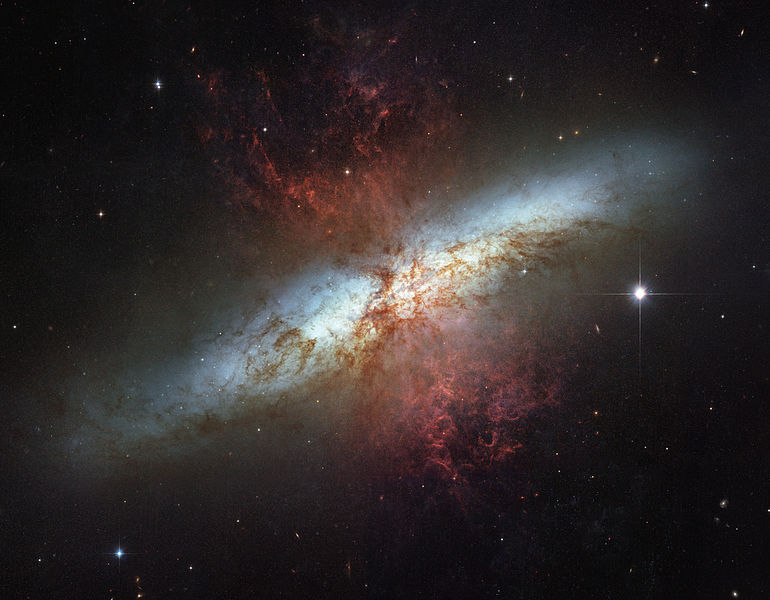
Astronomers know that when galaxies’ nuclei become active–releasing tremendous floods of energy–supermassive black holes are the ultimate culprit.
We also know that supermassive black holes lurk at the hearts of most large galaxies.
But most galaxies are not active; only a small percentage are. Our home galaxy is host to a supermassive black hole, but it’s not active. Neither is the black hole within the nucleus of our nearest galactic neighbor, Andromeda.
So, what makes a supermassive black hole erupt?
The answer lies in observations of the shapes of active galaxies. But first, let’s quickly review what a normal galaxy looks like.


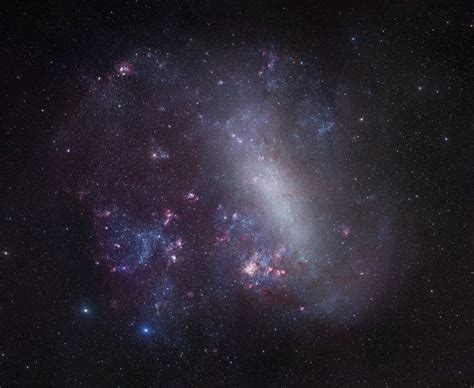
When we explored the shapes of galaxies, we covered three main types of galaxies: spirals, ellipticals, and irregulars.
Spiral galaxies are disk galaxies: they’re shaped like a frisbee. Elliptical galaxies are round and oblong, like a ball. The aptly named irregular galaxies have no defined shape, but make no mistake: they’re not interstellar clouds within our own galaxy, they’re whole galaxies outside our own.
None of these galaxies are “blank slates,” untouched by the processes that shape galaxies. Spiral galaxies likely cannot evolve without gentle tidal interactions. Elliptical galaxies form from major collisions that scramble their stars’ orbits and use up all their gas and dust in star formation. And irregular galaxies are constantly twisted and warped and cannibalized by larger nearby galaxies.
But these are the most common types of galaxies. When galaxies don’t look like these, we know that something else has shaped their evolution, something unique.
Sometimes, that’s as simple as a galaxy plunging rapidly through the intergalactic medium of hot gas within its home cluster, which can strip it of its gas and dust:


Lenticular galaxies are a type of disk galaxy, like a spiral galaxy. But unlike spirals, they have little or no gas or dust.
Sometimes, we see mostly normal-looking galaxies in the process of interacting or merging:




In the case of the Whirlpool Galaxy, the Mice, and the Antennae Galaxies, we see two formerly normal spiral galaxies colliding.
But galaxies are not solid objects. They’re gravitationally bound groupings of stars–and internally, their stars are separated by several light-years. When galaxies “collide,” they actually pass through one another.
It’s their gravitational fields that collide. And that wreaks havoc on the galaxies’ shapes.
That’s how we get objects like the Antennae Galaxies, which barely look anything like spirals anymore. It’s how we get the Mice, which appear to be chasing one another in a grand cosmic dance.
And it’s how we get a case like ESO 146-5–at least four separate nuclei merging to form one elliptical galaxy:

And that right there is the key.
In fact…if you’ve been following my recent posts for a while, you met a few active galaxies long before we started talking specifically about them.

Remember the elliptical galaxy known as Centaurus A, Caldwell 77…and NGC 5128?
Yup. That’s NGC 5128. To those of you who have been following my active galaxy unit, that catalog designation might sound very familiar…
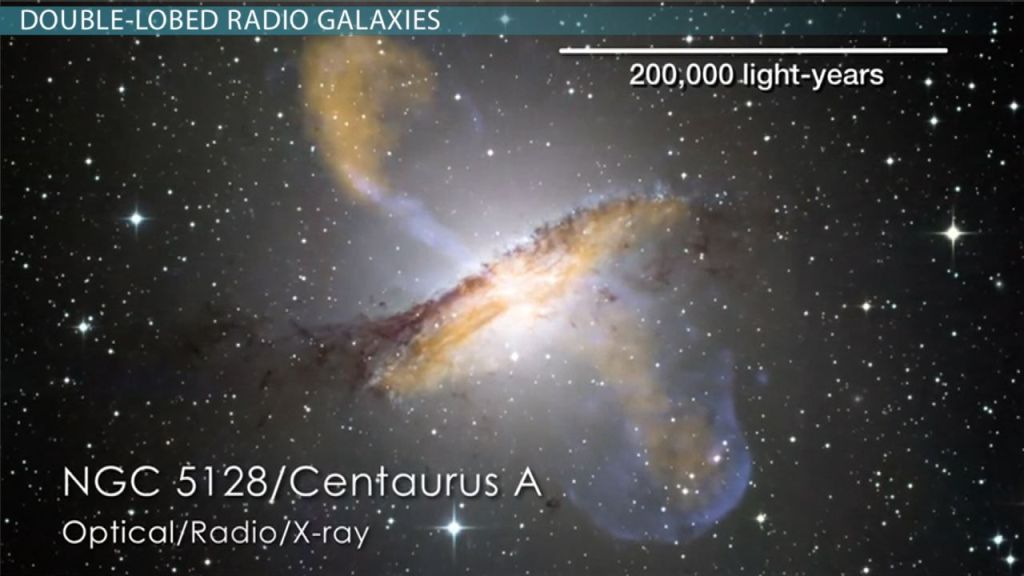
The first image above is visible-wavelength only. But if we take a peek at this galaxy using x-ray and radio telescopes, we reveal the features color-coded in yellow and purple: jets and radio lobes.
If you don’t believe that this is the same galaxy, take a closer look at the dust ring. It has the exact same shape and pattern in both images. It’s just vertically mirrored! The two bright stars nearest the galaxy also appear in the same pattern, just flipped.
Okay…hold on. Let’s get on the same page. Are we saying that NGC 5128 has suffered interactions and collisions, like the Whirlpool, the Mice, and the Antennae?
Yup, we are.
In fact, we’re saying that, like ESO 146-5, NGC 5128 is the result of a merger between two galaxies: an elliptical and a spiral. That explains how the heck this elliptical has a dust ring. The dust ring is a donation from the spiral galaxy that merged with this elliptical.
But…what does any of this have to do with supermassive black holes?
Let’s take another look at ESO 146-5.

See that fuzzy haze around the four nuclei? That’s one galaxy. Or, at least, it will be, one day.
This galaxy has four distinct nuclei. But that’s not all it has four of.
These nuclei were once within four distinct galaxies. And each one of these nuclei is likely home to a supermassive black hole.
What happens when two or more supermassive black holes spiral together on a collision coure?
Well, you get this…

And this…
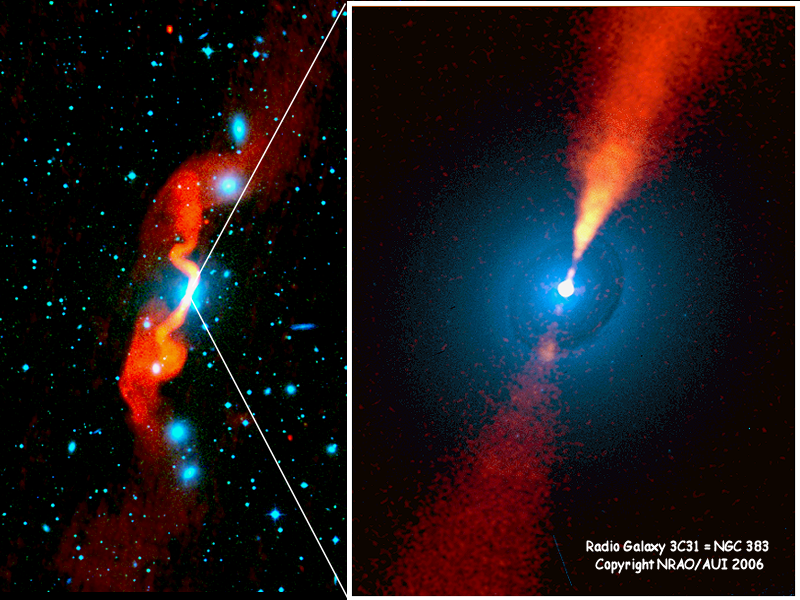
And this.
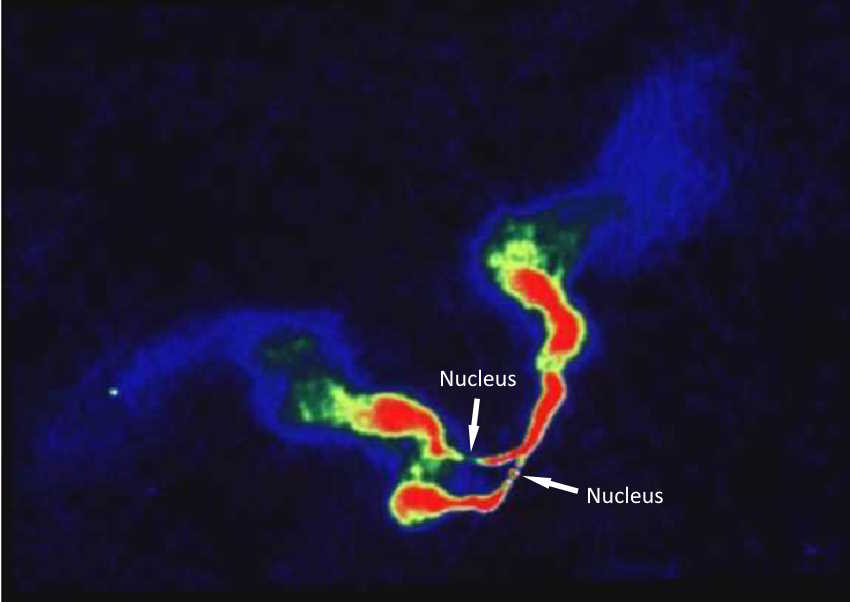
These are all observations of galactic nuclei orbiting one another as their host galaxies interact and collide. But more importantly, these are all observations of active galaxies, just like NGC 5128. Their supermassive black holes are emitting high-speed jets of energy that impact and heat up the intergalactic medium.
So, how are the supermassive black holes in these nuclei getting woken up?
The answer is in those gravitational interactions. More specifically, tides. And there’s no better way to explain it than the case of Swift J1644+57.

The designation Swift J1644+57 refers to an event observed back in 2011, when a single star’s orbit destabilized and it spiraled into its host galaxy’s supermassive black hole.
The result: tidal forces stripped the star apart. And a small percentage of the star’s material fell into the black hole.
That woke the dragon.
Before, we had a “quiet” black hole, perfectly content to mind its own business as the gravitational center of its host galaxy. But for it, the tiny morsels of star stuff that slipped down its gravity well were an energy feast.
Astronomers observed a new source of intense flares of energy in the constellation Draco: a newly active galaxy.
Swift J1644+57 was a rare event. Evidently, galaxies are generally stable, their stars and interstellar clouds occupying stable orbits. Even when galaxies interact, most material is thrown away from the black hole.
Small eruptions occur occasionally. Even our own Milky Way shows evidence of gas bubbles that formed from energy jets millions of years ago:

But the powerful eruptions typical of active galaxies are rare, and observations of the distorted shapes of active galaxies support the conclusion that they are a result of galactic interactions and mergers.
Essentially, the gravitational chaos of a merger throws material from the galaxies inward, offering the sleeping black holes an energy feast. And that’s how we end up with Seyfert galaxies, double-lobed radio galaxies, and–my favorite–quasars.



By now, we’ve answered a lot of fundamental questions about how galaxies form and evolve, how they collide, and how their supermassive black holes become active.
But where do all these stages of the “life” of a galaxy fit into the story of the universe? Was there an “age” of active galaxies, where mergers were more common? Or is it simply a rare event that can happen anytime in a galaxy’s history?
We’ll explore that question next up!